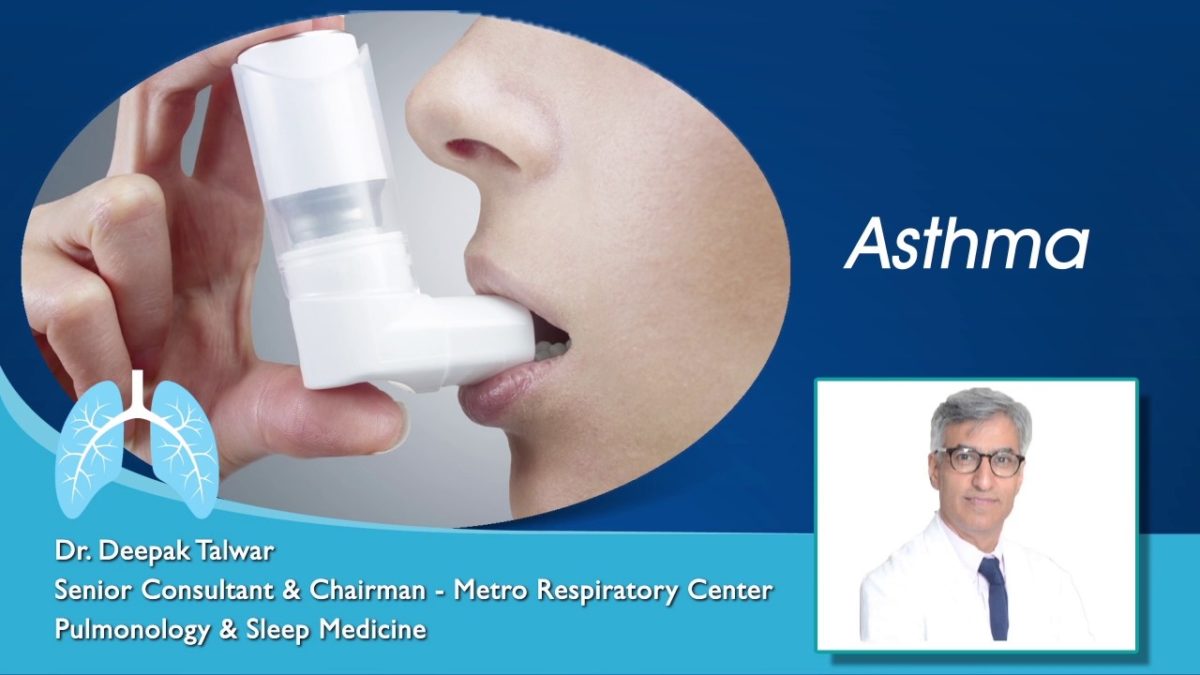
Running short of breath? You could be suffering from lung disease, warns Dr Deepak Talwar
Chronic Obstructive Pulmonary Disease (COPD) refers to a progressive respiratory disorder.It is an umbrella term for varied progressive lung diseases, such as chronic bronchitis, emphysema, refractory (non-reversible) asthma, and some other forms of bronchitis.
Dr Deepak Talwar, Senior Consultant & Chairman (Pulmonology and Sleep Medicine) at Metro Respiratory Center states, “Increasing breathlessness and coughing must not be mistaken with the signs of aging. Noticeable shortness of breath in young age can be a matter of concern.”

Early symptoms of COPD
- Long-term or chronic cough, chest tightness, wheezing – an indication of improper lung functioning
- Excessive production of mucus or phlegm – usually three times the mucus produced by a healthy body
- Breathlessness – mostly during any physical activity, walking uphill, or playing sports
- Fatigue, loss of energy – more exhaustion than usual
Severe lung damage could also lead to:
- Frequent colds
- Respiratory infections
- Sudden and extreme weight loss
- Blue fingernails or lips
- Swelling in feet, legs or hands
What causes COPD?
- Active and passive smoking
- Air pollution
- Frequent exposure to irritants like sawdust, chemical fumes or other aerosolized particles
According to Dr Deepak Talwar, an experienced pulmonology specialist will determine if you have COPD by conducting a set of detailed lung function tests to evaluate the breathing pattern.
“There is no specific technique of curing COPD. However, symptoms can be managed with certain medications and lifestyle changes,” says Dr Deepak Talwar.
Breathing exercises for COPD patients by Dr Deepak Talwar
- Pursed lip breathing technique
- Relax your upper-body muscles.
- Inhale through nose for 2 seconds and keep it inside the mouth. Ensure your mouth is closed.
- Pucker your lips (just like how you do when you whistle, or blow out candles)
- Exhale slowly from your pursed lips for 4 seconds.
Benefits:
- Opens airways
- Releases the air trapped in the lungs
- Improves ventilation
- Relieves breathlessness
- Relaxes the mind and body
- Diaphragmatic breathing technique
The large, dome-shaped muscle at the base of the lungs is called the diaphragm, which happens to be the most efficient breathing muscle. The diaphragm functions in conjunction with abdominal muscles. COPD, or pulmonary disease leads weakening and flattening of the diaphragm.
- Keep one hand over your chest and the other one on your stomach.
- Inhale gently through the nose. Feel your stomach moving outward against your hand.
- Purse you lips and exhale. Feel your stomach muscles falling inward. The hand on your chest must remain still.
Benefits:
- Helps in strengthening the diaphragm
- Decreases oxygen demand
- Lowers breathing rate
- Lends energy to breathe
Getting instructions from a certified therapist or respiratory health care professional is recommended.
COPD health tips by pulmonologist Deepak Talwar
- Achieve an ideal body weight. Do regular monitoring.
- Stay hydrated. Drink plenty of fluids.
- Consume fibre-rich foods like fresh fruits, vegetables, whole grains, bran, and rice.
- Keep a check on sodium (salt) intake in your diet.
- Avoid overeating.

Deepak talwar is the best doctor for pulmonology and asthama.
Very good tips
Very nice and experienced practitioner in the field of pulmonology
Very good doctor..i have taken treatment from him
great doctor..very experienced and knowledgable…I have taken treatment for asthama from 2 doctors but nothing worked really well..but whem I get to know about Deepak Talwar, I visited his clinic and got the best treatment for my asthama problem ever. The medicines he suggested really worked well for me and I appreciate his practice always.
Very useful and informative article
Very good information shared by Dr Deepak Talwar
Good Explanation about the heart disease and how to take care thanks for the article Dr. Deepak Talwar.
great doctor..!
It was an informative article, specially coming from such a renowned doctor
Would be on the lookout for the symptoms in the family members for an early warning if it ever happens.
Helpful and Informative Article , love to read more Dr. Deepak Talwar
Nice Article by Dr Deepak Talwar. The layout of article is impressive.